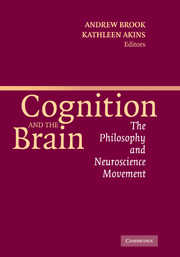11 - A Neurofunctional Theory of Consciousness
Published online by Cambridge University Press: 02 February 2010
Summary
Introduction: The Problems of Consciousness
Reading the philosophical literature on consciousness, one might get the idea that there is just one problem in consciousness studies, the hard problem. That would be a mistake. There are other problems; some are more tractable, but none is easy, and all interesting. The literature on the hard problem gives the impression that we have made little progress. Consciousness is just an excuse to work and rework familiar positions on the mind–body problem. But progress is being made elsewhere. Researchers are moving toward increasingly specific accounts of the neural basis of conscious experience. These efforts will leave some questions unanswered, but they are no less significant for that.
To move beyond the hard problem, I would like to consider some real problems facing consciousness researchers. First, there is a What Problem. This is the problem of figuring out what we are conscious of. What are the contents of conscious experience? For those looking at the brain, it is closely tied to a Where Problem. Where in the brain does consciousness arise? Locating consciousness may not be enough. We need to address a How Problem. How do certain states come to be conscious? This can be construed as a version of the hard problem, by asking it with right intonation: How could certain physical states possibly be experienced? But there is another reading that is also worth investigating.
- Type
- Chapter
- Information
- Cognition and the BrainThe Philosophy and Neuroscience Movement, pp. 381 - 396Publisher: Cambridge University PressPrint publication year: 2005
References
- 35
- Cited by

